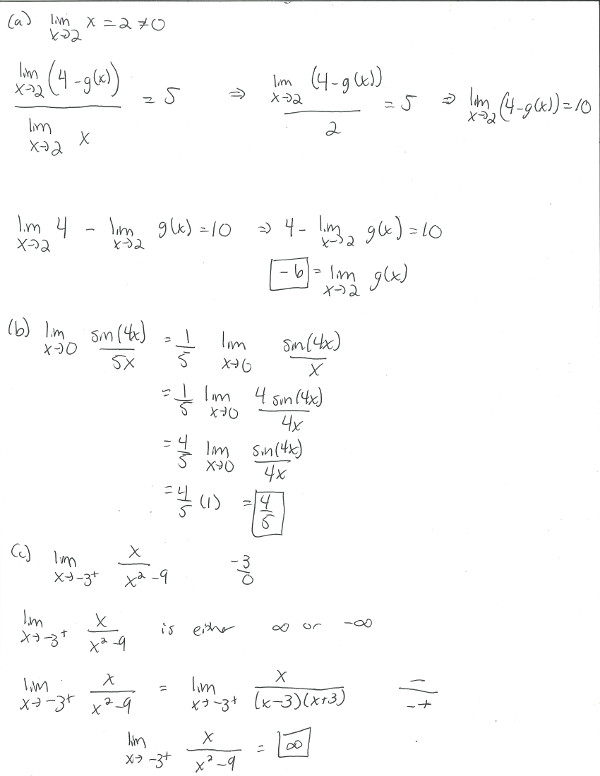Difference between revisions of "009A Sample Midterm 1, Problem 1"
Jump to navigation
Jump to search
| Line 6: | Line 6: | ||
<span class="exam">(c) Evaluate <math style="vertical-align: -14px">\lim _{x\rightarrow -3^+} \frac{x}{x^2-9} </math> | <span class="exam">(c) Evaluate <math style="vertical-align: -14px">\lim _{x\rightarrow -3^+} \frac{x}{x^2-9} </math> | ||
| + | <hr> | ||
| + | [[009A Sample Midterm 1, Problem 1 Detailed Solution|'''<u>Detailed Solution with Background Information</u>''']] | ||
| + | [[File:9ASM1P1.jpg|600px|thumb|center]] | ||
| − | |||
| − | |||
| − | |||
| − | |||
| − | |||
| − | |||
| − | |||
| − | |||
| − | |||
| − | |||
| − | |||
| − | |||
| − | |||
| − | |||
| − | |||
| − | |||
| − | |||
| − | |||
| − | |||
| − | |||
| − | |||
| − | |||
| − | |||
| − | |||
| − | |||
| − | |||
| − | |||
| − | |||
| − | |||
| − | |||
| − | |||
| − | |||
| − | |||
| − | |||
| − | |||
| − | |||
| − | |||
| − | |||
| − | |||
| − | |||
| − | |||
| − | |||
| − | |||
| − | |||
| − | |||
| − | |||
| − | |||
| − | |||
| − | |||
| − | |||
| − | |||
| − | |||
| − | |||
| − | |||
| − | |||
| − | |||
| − | |||
| − | |||
| − | |||
| − | |||
| − | |||
| − | |||
| − | |||
| − | |||
| − | |||
| − | |||
| − | |||
| − | |||
| − | |||
| − | |||
| − | |||
| − | |||
| − | |||
| − | |||
| − | |||
| − | |||
| − | |||
| − | |||
| − | |||
| − | |||
| − | |||
| − | |||
| − | |||
| − | |||
| − | |||
| − | |||
| − | |||
| − | |||
| − | |||
| − | |||
| − | |||
| − | |||
| − | |||
| − | |||
| − | |||
| − | |||
| − | |||
| − | |||
| − | |||
| − | |||
| − | |||
| − | |||
| − | |||
| − | |||
| − | |||
| − | |||
| − | |||
| − | |||
| − | |||
| − | |||
| − | |||
| − | |||
| − | |||
| − | |||
| − | |||
| − | |||
| − | |||
| − | |||
| − | |||
| − | |||
| − | |||
| − | |||
| − | |||
| − | |||
| − | |||
| − | |||
| − | |||
| − | |||
| − | |||
[[009A_Sample_Midterm_1|'''<u>Return to Sample Exam</u>''']] | [[009A_Sample_Midterm_1|'''<u>Return to Sample Exam</u>''']] | ||
Revision as of 07:24, 7 November 2017
Find the following limits:
(a) Find provided that
(b) Find
(c) Evaluate

![{\displaystyle \lim _{x\rightarrow 2}{\bigg [}{\frac {4-g(x)}{x}}{\bigg ]}=5.}](https://wikimedia.org/api/rest_v1/media/math/render/svg/81d23dbe64c4cb46da5b3a09f0267a3cfbe494f1)


